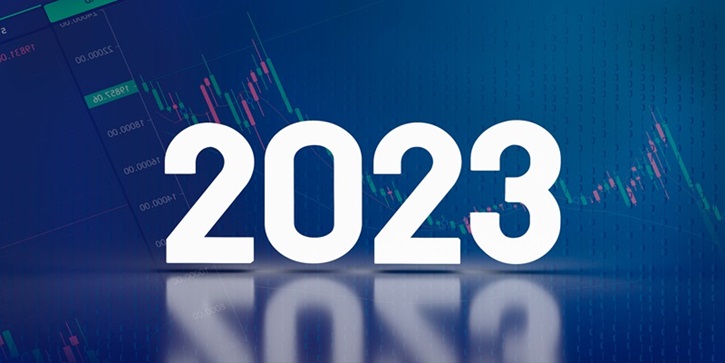
The Project 5X Report Card
- Stephen McBride
- |
- March 4, 2024
- |
- Comments
This article appears courtesy of RiskHedge.
Stephen’s note: Today, I’m handing the reins to RiskHedge publisher Dan Steinhart and my co-editor on Disruption Investor, Chris Wood. As you may know, Chris also heads up our microcap advisory, Project 5X, which the guys discuss below in our latest “Report Card” update...
***
Dan Steinhart: Chris, for readers who aren’t familiar with you, you’re involved with several of our services at RiskHedge.
You’re the Chief Investment Officer behind Disruption Investor, where you work with Stephen McBride to identify disruptive stocks in long-term megatrends that you expect to outperform the market. Disruption Investor posted a 51% return last year and earned an A+ grade.
You also wrote The Crisis Report in the summer of 2022, when we were in a painful bear market. Your thesis was that several extremely high-quality tech stocks were trading for irrationally cheap prices that we might never see again.
So you released 10 “Buy” recommendations. As of this week, nine out of 10 posted gains, for an average of 45%. (Teradyne is down 1%.)
We didn’t do a Report Card for The Crisis Report because it wasn’t a subscription product. But looking at its “return on investment,” it would’ve earned an A.
If an investor had invested just $500 into each stock recommended in the report, he would have seen $2,250 in profits—compared to the $299 price tag of the report. Of course, our lifetime RiskHedge Reserve subscribers got The Crisis Report for free.
Finally, you’re the editor of Project 5X, our longest-running advisory.
Chris Wood: Yes. Project 5X is our microcap advisory. In it, I recommend stocks that can appreciate at least 500% within three to five years.
Dan: Project 5X is a speculative advisory, suitable for investors who are comfortable taking high levels of risk to shoot for high profits. In the past, you’ve had some stellar years.
But we’re talking about 2023 today. And the results, to be blunt, are poor. Why don’t you start by giving us the big picture for microcaps?
Chris: To say it’s been tough for microcap investors the past few years is an understatement. We’ve endured the longest and deepest microcap bear market I’ve ever been a part of.
I attend a lot of microcap investor conferences. At least three in-person every year, and many more virtually. I make it a goal to meet at least 100 microcap CEOs and founders every year, and I usually exceed that goal.
Everyone agrees this is the worst they’ve ever seen it.
Dan: So what do you chalk that up to? Overall, markets had a great 2023. Microcaps are a complete outlier in that their struggles from 2022 continued through 2023.
Chris: I can sum it up in one word: liquidity.
The microcaps I target are tiny, and they’re working on big breakthroughs. They’re rarely profitable yet and often have no revenue. Getting in at this early stage—if the company ultimately becomes successful—is how the financial rewards can be so large.
Anyway, microcaps are not well capitalized, almost by definition.
Dan: In layman’s terms, “well capitalized” means “has plenty of cash.” Microcaps tend to be cash-strapped.
Chris: Yes, and these days especially. As you know, the Fed engaged in its most aggressive rate-hiking cycle in 40 years. The M2 money supply is actually still declining. Prior to 2022, that hadn’t happened since 1949. This sucked money out of the investment markets, which slammed pretty much all stocks in 2022.
But in 2023, larger, deep-pocketed companies rebounded sharply, giving rise to a great year for the S&P 500 and Nasdaq. These companies generate lots of cash on their own, and they can easily borrow money if need be. Most microcaps can’t do either, which is the main reason they haven’t bounced back yet.
Dan: So the first step to evaluating performance is to measure it. Indexing and benchmarking have always been a challenge for microcaps, for reasons you covered in detail here. In short, when a microcap is successful, it grows… until it’s no longer a microcap.
So, the most successful microcaps are always graduating out of an index. It’s like a farm team in baseball always losing its best players to the big leagues.
Chris: Exactly. So the Planet MicroCap Index, in my opinion, is the most useful gauge of microcap performance. My friend Bob Kraft and his team over at Planet MicroCap compile it.
It takes the 30 best-performing microcaps in each sector and compiles them into an equally weighted index. In other words, it’s a gauge of the best-performing microcaps across the economy.
From late September 2021 through early November 2023, the Planet MicroCap Index fell 62%.
It’s risen a bit since then, but it’s still down 53% from September 2021.
So the environment—the big-picture forces—have been terrible. But ultimately, the performance of Project 5X is my responsibility. It lost 30% in 2023, a performance I’m very unhappy with and is not up to my standards.
Dan: It’s worth pointing out that microcaps are highly volatile and cyclical. Project 5X gained 129% in 2020 and 52% in 2021, for example.
I want to talk more about this cycle. Because if microcaps are near the bottom of it, that means it’s probably a good time to be getting involved and definitely a bad time to be selling. Let’s continue that on Monday, and I’ll also give you a grade.
And you can talk about what you took from your experience in 2023—what you learned, your biggest mistake, and what you’re looking forward to in 2024.
Chris: Sounds great.
—To be continued on Monday—
|

This article appears courtesy of RH Research LLC. RiskHedge publishes investment research and is independent of Mauldin Economics. Mauldin Economics may earn an affiliate commission from purchases you make at RiskHedge.com
